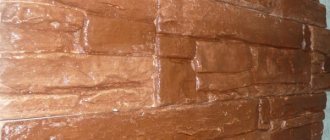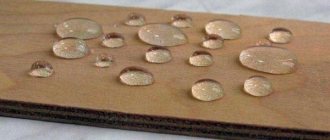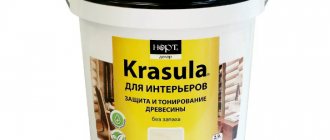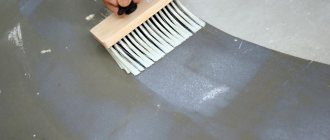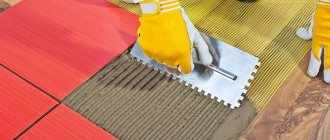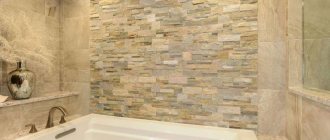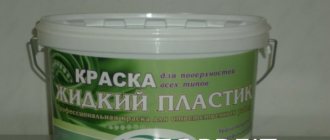Why treat already laid tiles?
applying “wet effect” impregnation
Impregnation of tiles has 2 purposes: decorative and operational. If paving paths initially involves the use of a durable coating, then after finishing the masonry work, it is recommended to further process the paths to increase their strength characteristics. In addition, impregnation changes the shade of the paving and gives an unusual effect to the design.
Since paving slab paths are exposed to negative environmental influences and receive heavy loads every day, it is necessary to extend their service life. For this purpose, protective compounds are used, the advantages of which include:
- ease of care;
- sealing seams;
- increase in roughness, decrease in slip;
- creating a water- and dirt-repellent effect;
- resistance to chemically active substances;
- protection from precipitation and sudden temperature changes.
In addition to the above features, impregnation helps improve the appearance of the coating.
When using impregnation, the following problems are solved:
- Elimination of mold and moss in tile seams and joints between the covering and the blind area.
- Reducing the rate of sedimentation of dirt and soiling.
- Elimination of problems with moisture accumulation in tile joints and their subsequent erosion.
- Increased resistance to chemicals and salt.
- Reduced risk of coating destruction.
- Saving money on path repairs.
Treating the tiles with a special compound not only extends the service life of the coating, but also gives it an aesthetic appearance. Also, this method is used to update the old coating.
Choosing a good water repellent for concrete - which one is better to use
Having decided to prepare moisture-resistant concrete with your own hands, decide on the brand of concrete impregnation. Construction supermarkets offer an expanded range of impregnating compounds. Let's look at the most popular water repellents.
Hydrophobic additive for concrete "Aquasil"
The use of water repellent brand "Aquasil" allows you to:
- significantly reduce the water absorption coefficient of various types of concrete;
- increase the strength characteristics of the processed material by 1.3 times;
- increase the service life of building structures.
The use of the additive allows you to save on re-processing the concrete mass, since after the first treatment the next impregnation of the concrete is carried out after 10 years.
Wide range of impregnations available
Features of the water repellent:
- reduced alkali concentration;
- resistance to elevated temperatures;
- explosion safety of the composition.
Hydrophobization of concrete using Tiprom
Tiprom, according to reviews from builders, has proven itself to be a reliable additive with a long period of action. The treated surface of the concrete mass retains moisture-repellent properties for ten years.
Water repellents of the Tiprom trademark are divided into types depending on the depth of penetration into the concrete mass:
- an increased degree of moisture protection is provided by products with the index U and U1 in the marking;
- the average level of moisture resistance is supported by additives with the additional designations K and K Lux;
- reduced hydrophobicity is achieved by using the Tiprom water repellent with the letter D in the marking.
The depth of absorption into the concrete mass for various products ranges from 1 to 3.5 cm.
Water-repellent impregnation of concrete structures can significantly increase its durability
Impregnation for concrete "Penta"
Water repellents of the Penta brand are distinguished by an expanded range of use. They can be applied to all types of surfaces:
- dry concrete base;
- wet massif.
Ways to protect paving slabs
Preventive impregnation of the paving surface prevents its rapid abrasion and protects against minor mechanical damage. There are various means of protecting paving stones and tiles:
- Cleansing. Remove old contaminants such as grease, salt and chemical deposits.
- Anti-mildew. They are used for processing tile seams and butt joints of paths and blind areas.
- Water repellents. Apply immediately before putting road surfaces into operation.
- Special means for protecting tiles and paving stones.
Types of protective compounds
Acrylic impregnations
Varnish for floor tiles is made from acrylic. It is distinguished by deep penetration into the porous structure of artificial stone. Consumption for double processing using a roller usually does not exceed 200...210 g/m².
Acrylic impregnation for “wet stone” porcelain tiles can be used even in winter, when doors and windows are closed. No harmful fumes are released. The smell disappears 3-4 hours after completion of work.
Acrylic-based hydrophobic impregnation is remarkable in that water cannot wet the surface. The drops do not spread and can be easily collected with a sponge or a regular rag. Can be used for facing stones of natural and artificial origin.
They produce solutions recommended for outdoor use. They do not lose their protective properties for 5-7 years. In the future, it is enough to apply only one layer so that all surfaces again receive reliable protection.
The technology of use is shown in the attached video.
Latex impregnation for stone
The work can be done with solutions based on latex. An elastic film forms on the surface. It completely separates the environment from the base. In this case, the working solution can penetrate deep enough (research has established that granite is impregnated to a depth of 1.2...1.6 mm).
This solution is recommended to be applied by spraying. You can use regular garden sprayers here. The video shows the technology for performing work to protect a stone wall.
Water-dispersed impregnation
A relatively inexpensive solution allows you to impregnate polished porcelain tiles. Its penetrating ability is 0.3...0.6 mm. It quite densely fills the microscopic cavities on the surface of the tiles.
As a result of using this composition, the color saturation of the coating increases. The colors play brighter. Gloss appears on dull surfaces.
Hydrophobic impregnation for natural stone
Another rather interesting composition. It is recommended for external use.
Owners of suburban areas use this impregnation even for paths. The resulting protective film resists wear and tear for two to three years.
Alkyd impregnations
Alkyd varnishes are prepared using organic solvents; they are used to coat products made of real and artificial stone. A rather thick film is formed (0.3...0.5 mm). Its thermal expansion corresponds to the values characteristic of porcelain stoneware. Therefore, temperature changes do not destroy the coating.
The “wet stone” effect is also clearly evident here. It is recommended to re-treat before the previous peeling begins (usually after 3-4 years).
Types of varnish for wet effect paving slabs, and which one is better?
Wet effect tile varnish gives the coating a rich color, emphasizing the texture of the material. For surface treatment, water-based and solvent-based acrylic varnishes are considered.
Water-based varnish is more often used for interior decoration because it is non-toxic and does not have emissions harmful to the body.
Solvent varnish has harmful emissions and is toxic, but at the same time it has good performance characteristics, which is achieved due to the chemical components in the composition. Therefore, it is recommended to use it for treating street pavement.
The main advantages of processing varnish with a wet effect
Caring for paving slabs is no less important than caring for floor coverings in the house, since timely treatment of paths solves problems such as:
- abrasion;
- wear resistance;
- moisture resistance;
- aesthetics.
A coating treated with varnish that has a “wet effect” property will last longer, receive an additional matte shine and will look wet in dry weather, which will give the design of the paths an unusual look. In addition, tiles with a wet effect will be safer to use due to their anti-slip properties and will retain the natural shade of the material longer.
Types of dyes
The answer to the question of how to paint paving slabs is quite comprehensive. There are several types of dyes with different performance characteristics. Based on the method of use, they can be arranged into 2 groups:
- The agents that are introduced into the internal structure of the t are coloring substances added during the manufacture of tiles.
- Compositions that have a surface effect. Those with which the finished surface is processed.
Painted sidewalk at the dacha Source www.kraski.ru
Procedure for processing tiles
When impregnated, the surface of the tile is covered with a kind of protective film, so it is recommended to carefully prepare the coating for processing. All work can be divided into several stages:
- Preparatory. The coating is cleaned of debris and dust. If there are old contaminants, it is also recommended to remove them using detergents designed for caring for paving surfaces.
- Hydrophobic. A hydrophobic composition, which in appearance resembles a transparent water-repellent film, is applied to a cleaned and completely dried surface. The number of treatments is arbitrary, but before applying subsequent layers, you must make sure that the previous one is completely dry. Otherwise, the layers will not adhere to each other.
- Final. At this stage, the surface is covered with a finishing layer - decorative, mainly special varnishes. Finishing products will give the appearance of a “wet stone”, which will only enhance the natural shades, bringing back colors that have faded over time.
Complex processing
This type of tile processing involves the use of several means and methods of protection. This is not only a “wet stone” water repellent for paving slabs, but also a decorative layer, the implementation of certain works.
How to perform universal complex coating treatment:
- Make local repairs, thoroughly clean the surface from dirt and dust.
- Apply a layer of water repellent for reliable protection against water.
- Cover the tiles with a decorative composition - usually it is a wear-resistant varnish intended for outdoor use.
Complex treatment allows you to: increase the resistance of the coating to moisture, resistance to sunlight and negative atmospheric phenomena, extend the service life, improve aesthetics, protect against microorganisms and moss.
The modern market for materials for repair work offers a wide selection of water repellents - in stores in the regions and Moscow, “wet stone” and other types of compositions can be found in various versions. The main thing in this case is to choose the right product and apply it in accordance with the technology to create a beautiful, reliable and durable layer on paving slabs.
Water repellent or tile varnish: which is better?
Both types of surface treatment have their advantages and disadvantages. The water repellent will be an excellent protection for the paving surface and will prevent the destruction of the material from moisture, the negative effects of aggressive chemical substances and precipitation.
In addition, the water repellent can penetrate deep into the tile, filling the pores and forming a kind of waterproofing. However, impregnation will not save you from mechanical damage and does not have decorative properties, nor will it return the coating to its former aesthetics.
Stone varnish is also used as a water-repellent finish, creating a wet effect for the stones. A disadvantage may be poor resistance to mechanical damage - over time, cracks appear on the tiles, through which moisture penetrates and destroys the structure.
However, the surface coated with paving slab varnish takes on a renewed appearance and looks impressive. As for the price, for example, treating paving stones with impregnation even in several layers will be cheaper than covering the same area with varnish.
Why is waterproofing needed?
The main task of using water-repellent impregnations is to protect concrete structures from the penetration of moisture, which over time can destroy it. Concrete itself cannot withstand the effects of aggressive chemicals, precipitation, and industrial gases, which destroy its structure from the inside. The strength of concrete is determined by the characteristics and amount of cement, sand and crushed stone, the water-cement ratio and the chemical processes that occur during cement hydration.
Hydration is the binding of water and cement powder components. Because of it, a mixture with a gel consistency is formed in the pores of concrete. The pores also contain air and water. All this negatively affects the quality of concrete.
Micropores give concrete 2 negative properties:
- Insufficient hydrophobicity (resistance to water penetration). As a result, moisture fills the pores.
- Low density. It reduces the strength of hardened concrete.
To solve these problems and protect concrete from destruction, water-repellent impregnations are used. Thanks to them, it is possible to easily transform the porous structure of the material into an almost completely impenetrable one.
For concrete surfaces that come into contact with moisture, this is very important. This is precisely the task that waterproofing performs, one of the types of which is water-repellent impregnation.
Popular hydrophobic solutions
Tiprom U
Crystallisol
Aquasil
There are compositions that differ in their scope of application. Some of them are intended only for surface use, others for volumetric use, and others can be applied to the surface and penetrate into the tile, filling the porous structure of the coating.
The domestic market offers many different formulations.
| Name of water repellent | Peculiarities | Life time | Consumption, l/m2 |
| Aquasil | Concentrated powder, characterized by high efficiency and low alkali content. Economical, can be used for surface and volumetric application. The water-repellent properties of the tiles increase up to 20 times. When applied volumetrically, it prevents the appearance of darkening. | 10 years | 0,25-0,5 |
| Tiprom U | Organic based concentrate. Has increased dirt-repellent characteristics. | 10 years | 0,15-0,4 |
| Crystallisol | The drug is based on methyl silicone polymer and is available in liquid form in 1 or 10 liter packaging. It is characterized by increased resistance to chemical and atmospheric influences, has increased vapor permeability and non-flammability | Up to 10 years | 0,1-0,3 |
| Ceresit ST 10,11,12,13 (for surface treatment); CO 81 (for volumetric processing) | Can be administered as an injection through artificial indentations. | 12 years | 0,2-0,5 |
| VOKA | It is a universal impregnation with increased moisture resistance, applied in 1 layer. | 11 years | 0,03-0,05 |
How to apply a water repellent?
A water repellent for brick or concrete is an aqueous solution of organosilicon copolymers. In addition, it contains antiseptics, surfactants and various chemical stabilizers. Such solutions are produced in the form of concentrates, ready for use.
Before treating with a water-repellent composition, you should prepare:
- Clean the surface to be treated from dirt, dust, paint, etc.;
- Remove old finish;
- Remove crumbling areas with a steel brush;
- Fill cracks and potholes with putty;
- Remove graffiti;
- Erase or wash away efflorescence on brick, concrete, plaster.
After the material is ready for processing, it is necessary to dilute the product in accordance with the instructions. It is indicated on the label. After this, you must put on a long-sleeved robe, rubber gloves and safety glasses. Pour the diluted product into a paint bath and apply with a brush or roller, generously wetting the surface. Porous surfaces require re-application at intervals of 30 - 40 minutes.
Anyone, even an untrained worker, can do such work. The main thing is to follow the instructions and observe safety precautions: avoid contact with eyes and mucous membranes, wash your hands with soap after work. To treat large areas, it is allowed to use machine-type sprayers and spray guns.
Tips for using impregnation
For coating treatment to be effective, certain conditions must be met:
- Before use, it is recommended to test the impregnation on an inconspicuous area.
- The surface to be treated must first be prepared, including covering up cracks and chips. Freshly laid tiles can be immediately covered with a finishing layer, bypassing the additional processing stage.
- If you urgently need to treat a poorly dried surface, you can use Neogard impregnation. It should be noted that this method is short-lived.
- It is recommended to apply any impregnation in a generous layer, trying to avoid the formation of drips.
- To ensure that the applied layer dries faster, excess impregnation should be removed from the treated surface. Removal can be done with a sponge, gently blotting the surface.
For newly laid coatings, paving fragments can be treated with a water repellent using the volumetric method: place the tiles in the solution for a few seconds, then remove them and pave the marked area.
Classification of impregnations
Based on their composition, all impregnations are divided into organic (polymer) and inorganic (synthetic). The action of organic is based on enveloping the surface of concrete pores and creating a waterproof film, which at the same time allows moisture and air vapor to pass through, the surface “breathes”. Synthetic ones work differently. By reacting with external molecular compounds and moisture in concrete or brick, they lead to their dissolution and the production of a jelly-like mass that is resistant to moisture penetration, which also has vapor permeability properties.
To protect concrete and stone structures, organic compounds are widely used. They are divided into several more subspecies:
- Acrylic. Budget impregnations, resistant to ultraviolet radiation, chlorides and moisture.
- Polyurethane. They penetrate deep enough into concrete - about 6 mm. Can be used indoors and outdoors, as well as in areas under awnings.
- Epoxy. Available in colorless and colored formulations. More often used in interior work than in exterior work. Compared to polyurethane ones, they do not smell as strong.
All impregnations are classified according to one more criterion - purpose. Depending on this factor, the compositions are distinguished:
- From mold and mildew. These impregnations are called antiseptics. They are designed specifically to protect against the appearance of fungus and are applied immediately before finishing.
- From corrosion. Anti-corrosion agents prevent the appearance of rust by increasing resistance to moisture and dampness.
- From moisture. Universal hydrophobic impregnations that fill all pores, voids and cracks. Particularly relevant for processing structures located on the street. In interior work they are used where concrete is used in conditions of high humidity.
By method of penetration
Depending on the depth of penetration, the following types of waterproofing are distinguished:
- Penetrating. The depth of its penetration into the concrete reaches 10-12 mm. This is the most reliable way to protect the material from moisture and extend its service life.
- Superficial. This includes film-forming impregnating compounds. From the name it is clear that they form a thin waterproof film on the treated surface, which becomes an obstacle to moisture.

